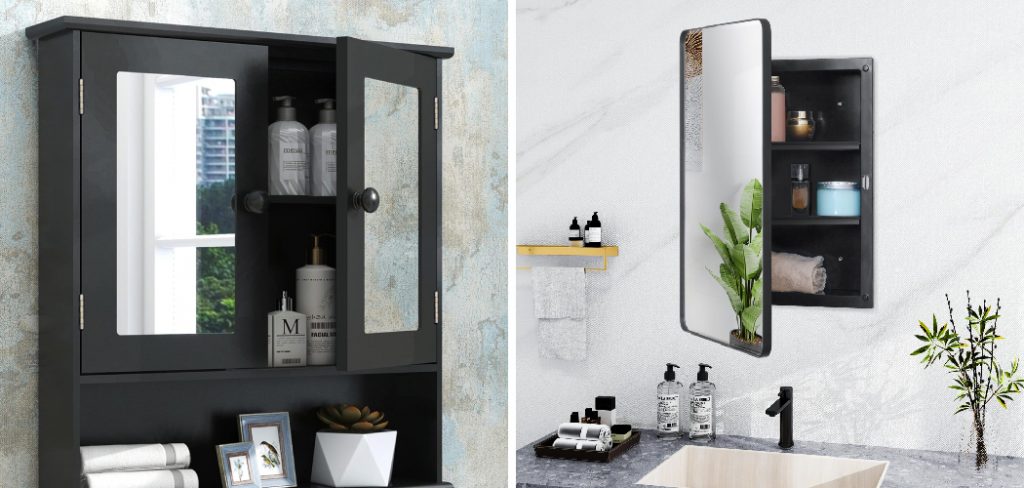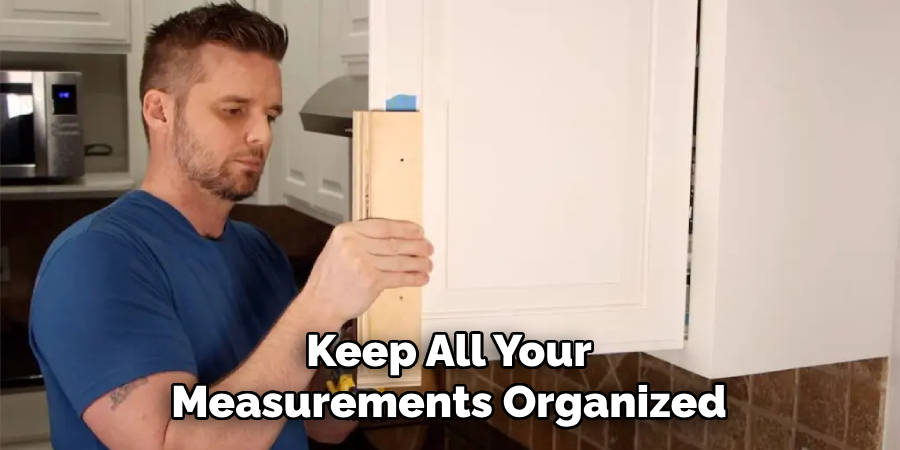Measuring your medicine cabinet accurately is essential for ensuring that it meets your storage needs and fits seamlessly within your space. Whether you’re planning to reorganize your current cabinet, install a new one, or simply need to make room for more supplies, knowing the precise dimensions is the first step in the process.

This guide on how to measure medicine cabinet will walk you through the key measurements to consider, tips for effective organization, and how to select the right cabinet to enhance both functionality and aesthetics in your home.
Why Measure Your Medicine Cabinet?
The primary reason for measuring your medicine cabinet is to ensure that it fits properly in your space. A cabinet that’s too big may look bulky and take up unnecessary room, while one that’s too small can feel cramped and limit your storage options. Additionally, knowing the exact measurements will help you choose the right size cabinet when shopping, saving you time and effort.
You may also want to measure your medicine cabinet if you’re looking to upgrade or replace your current one. This will help you determine if the new cabinet will fit in the same spot or if you’ll need to make any adjustments.
Needed Materials
Measuring Tape:
A measuring tape is the most essential tool for accurately measuring your medicine cabinet. Make sure it’s a flexible one, as it will allow you to measure around curves and corners with ease.
Pen and Paper:
Having a pen and paper on hand will help you record all your measurements and keep them organized for future reference. You can also create a sketch of your cabinet and label the measurements on it for easier visualization.
Key Measurements to Consider
When measuring your medicine cabinet, there are three key dimensions you need to consider: height, width, and depth. These measurements will help determine if the cabinet will fit in your desired space and how much storage capacity it offers.
Height:
Measure from the top of the cabinet (if it has one) to the bottom. This measurement is crucial if you have limited vertical space or want to ensure that the cabinet doesn’t interfere with any light fixtures or vents.
Width:
Measure across the front of the cabinet from one side to the other. This will determine how wide the cabinet is and if it can fit between two walls or above a sink.
Depth:
Measure from the back of the cabinet to the front, including any handles or knobs. This measurement will help you determine how much space you have for storing items inside.
8 Step-by-step Guidelines on How to Measure Medicine Cabinet
Step 1: Clear Out the Cabinet

Before you start measuring, it’s important to clear out your medicine cabinet completely. Remove all items, including medications, toiletries, and first aid supplies. This will not only give you a clear view of the cabinet’s interior but also allow you to clean the surfaces easily.
Once everything is removed, take this opportunity to check expiry dates on medications and dispose of any that are outdated or no longer needed. Having a clean slate will make the measuring process much smoother and help you visualize how you might reorganize the contents after your measurements are complete.
Step 2: Measure the Height
To accurately measure the height of your medicine cabinet, place one end of the measuring tape at the highest point of the cabinet and extend it down to the lowest point. Ensure that you are measuring straight down to avoid any discrepancies caused by slanting or uneven floors. It’s helpful to note both the overall height and any specific dimensions of shelves within the cabinet if applicable.
If your cabinet has multiple shelves, be sure to measure from the bottom to the top shelf as well, which will give you an idea of vertical storage capacity. Record this measurement alongside your other figures for a comprehensive overview of your cabinet’s dimensions.
Step 3: Measure the Width
Next, measure the width of your cabinet by placing one end of the measuring tape at the left edge and extending it to the right edge. This will give you an accurate idea of how wide your cabinet is and if it can fit in its intended space.
If your cabinet has any doors or drawers that are wider than the main frame, be sure to measure those separately as well. This will help determine if they will interfere with any other objects or walls when opening.
Step 4: Measure the Depth
The depth of a medicine cabinet is an important measurement, especially if you have limited bathroom space. To get an accurate measurement, place one end of the measuring tape at the back of the cabinet and extend it to the front, including any handles or knobs. This will give you an idea of how much space you have for storing items inside.
It’s also helpful to measure the depth of any shelves or compartments within the cabinet, as this will determine how much storage space they offer. Record these measurements alongside your other figures for a complete understanding of your cabinet’s dimensions.
Step 5: Measure the Door Swing
Measuring the door swing of your medicine cabinet is crucial for ensuring you have enough clearance to open the doors fully without obstruction. To do this, extend the measuring tape from the hinge to the outer edge of the door when fully open. If your cabinet features double doors, measure each door individually, as the swing may differ.

Additionally, consider any nearby items or fixtures that the door might hit when opening – this will help you assess whether the cabinet is suitable for your space. Record these measurements to include in your overall cabinet dimensions, keeping in mind that door swings can impact both usability and accessibility.
Step 6: Measure the Space Around the Cabinet
If you are planning to install a new medicine cabinet, it’s important to measure the space around it. This will ensure that there is enough room for installation and help determine if any adjustments need to be made for a perfect fit.
Measure the width of the area where your cabinet will be installed, including any walls or fixtures that may interfere. It’s also helpful to measure from the floor to the ceiling in case you need to adjust the height of your cabinet. Record these measurements alongside your other figures for future reference.
Step 7: Measure Any Additional Features
In addition to measuring the main dimensions of your medicine cabinet, consider measuring any other features that may impact its installation or usability. For example, measure the distance between shelves if they are adjustable, the thickness of the cabinet’s walls, and the size of any mounting hardware.
These additional measurements will not only help you determine how much space is available for storage but also give you an idea of how sturdy and durable your cabinet is. Record these figures alongside your other measurements for a comprehensive overview of your medicine cabinet.
Step 8: Create a Sketch and Label Measurements
To keep all your measurements organized and easily understandable, consider creating a sketch of your medicine cabinet with labeled dimensions. This visual representation can be helpful when planning out where to place items inside the cabinet or discussing installation options with a professional.
Be sure to include all the measurements you have taken, including any additional features or clearance requirements. This will serve as a useful reference when purchasing a new cabinet or making changes to your existing one.
Following these step-by-step guidelines on how to measure medicine cabinet for measuring your medicine cabinet will ensure that you have all the necessary information before making any decisions about installation or storage. With accurate and organized measurements, you’ll be able to find the perfect cabinet to suit your needs and fit seamlessly into your bathroom space.

Frequently Asked Questions
Q: What Should I Do if My Medicine Cabinet Doesn’t Fit in Its Intended Space?
A: If your medicine cabinet does not fit in its intended space, you may need to make adjustments to the surrounding area or consider purchasing a different size or style of cabinet. In some cases, it may be possible to return the cabinet and exchange it for a better fitting one. Consulting with a professional may also provide helpful solutions for installation.
Q: How Accurate Do My Measurements Need to Be?
A: While it’s important to be as accurate as possible with your measurements, there is usually some wiggle room when it comes to installing a medicine cabinet. However, keep in mind that even an inch or two can make a significant difference in terms of fit and functionality. Aim for precise measurements to ensure the best results.
Q: Can I Install a Medicine Cabinet Myself?
A: Depending on the complexity of the installation and your own DIY skills, you may be able to install a medicine cabinet yourself. However, if you are unsure or uncomfortable with the process, it’s always recommended to consult with a professional for proper installation. This will help ensure safety and accuracy in the process.

Conclusion
In conclusion, accurately measuring your medicine cabinet and the surrounding space is essential for ensuring a perfect fit and optimal functionality. By following the outlined steps on how to measure medicine cabinet, you can gather all necessary dimensions and considerations to aid in selecting or installing a cabinet that meets your storage needs.
A well-measured and organized approach not only enhances the usability of your cabinet but also contributes to a more streamlined and aesthetically pleasing bathroom environment. Taking these careful measurements will empower you to make informed decisions that enhance both efficiency and style in your home.
About the Author
Adrian Green, a lifelong woodworking enthusiast, shares his passion for the craft through The Woodenify Blog. With a foundation built on years of hands-on experience in his father’s woodworking shop, Adrian is dedicated to helping others learn and grow in the world of DIY woodworking. His approach to woodworking combines creativity, practicality, and a deep appreciation for the art of building with your own hands. Through his blog, he inspires individuals of all skill levels to embark on their own woodworking journeys, creating beautiful, functional pieces of furniture and décor.
Professional Focus
- Specializes in DIY woodworking projects, from furniture to home décor.
- Provides step-by-step guides and practical tutorials for woodworkers of all skill levels.
- Dedicated to helping readers build confidence and skill through easy-to-follow instructions and tips.
- Passionate about fostering a community of makers who can share, learn, and grow together.
Education History
- University of Craft and Design – Bachelor of Fine Arts (BFA) in Woodworking and Furniture Design
- Woodworking Apprenticeships – Extensive hands-on training with skilled craftsmen to refine carpentry and furniture making techniques.
- Online Courses & Masterclasses – Continued education in advanced woodworking techniques, design principles, and specialized tools
Expertise:
- DIY woodworking, carpentry, furniture making, and home décor projects.
- Creating accessible tutorials and guides for beginner to advanced woodworkers.
- Sharing the joys and satisfaction of woodworking, from raw materials to finished products.
